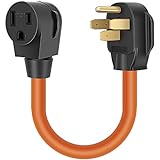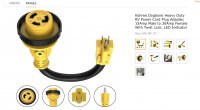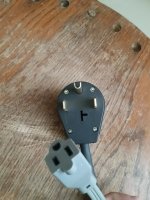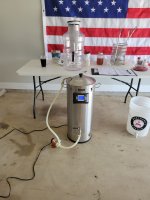Fluffhead
Member
You don't necessarily have to change the plug on the cord. You can make an adapter cord with an inline gfi and use any type of electric stove or electric dryer connector.
Can you elaborate a little more on this? Is there an adapter available that accomplishes this or would it have to be made? I'm interested in the foundry and 240v, but have little to no electrical knowledge/skill and am intimidated by the prospect of doing it myself.










































![Craft A Brew - Safale S-04 Dry Yeast - Fermentis - English Ale Dry Yeast - For English and American Ales and Hard Apple Ciders - Ingredients for Home Brewing - Beer Making Supplies - [1 Pack]](https://m.media-amazon.com/images/I/41fVGNh6JfL._SL500_.jpg)
































